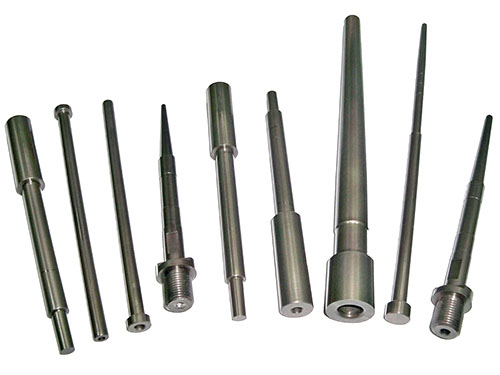Protective Pins: Safeguarding Your Mold's Performance and Longevity

In the intricate world of mold design and manufacturing, various components play critical roles in ensuring the efficiency, precision, and longevity of the molding process.
Among these components, pins hold particular importance, serving diverse functions aimed at optimizing mold performance and enhancing product quality.

In this article, we delve into three types of pins commonly utilized in mold designs:
Stop Button Pins,
Safety Pins,
Ejector Return Pins.
Each of these pins serves a unique purpose, addressing specific challenges encountered during the molding process.
Understanding their functions and significance is essential for mold designers and manufacturers striving to achieve optimal results and maintain the integrity of their molds.
Let's explore these pins in detail to appreciate their role in the intricate dance of mold manufacturing and product fabrication.

1. Stop Button Pin:
Function: Also known as Stop Pin or Spacer Buttons, the primary function of Stop Button Pins is to prevent the ejector plate from retracting completely, ensuring it doesn't rest against the clamping plate.
Importance: This prevents plate cocking and rust formation between the two plates during storage, which can occur when they are in constant contact.
Usage: While Stop Pins are commonly used in mold designs to maintain proper plate alignment, they may not be required in all scenarios. Their necessity depends on the specific design and requirements of the mold.

2. Safety Pin:
Function: Safety Pins are designed to prevent ejection pins from bumping into slides within the mold.
Importance: They play a crucial role in ensuring smooth operation during the ejection process, preventing potential damage to the mold components.
Usage: Safety Pins are typically incorporated into the mold design wherever there's a risk of collision between ejection pins and slides.

3. Ejector Return Pin:
Function: Ejector Return Pins, characterized by their larger diameter, are positioned outside the cavity area at the parting line.
Importance: They ensure that the ejector pins retract during the mold closing sequence, preventing them from scratching the cavity or breaking when the mold closes.
Usage: Ejector Return Pins are strategically placed to facilitate the smooth operation of the mold, minimizing the risk of damage and maintaining the integrity of the molded parts.

In conclusion, the effective utilization of Stop Button Pins, Safety Pins, and Ejector Return Pins is indispensable in ensuring the smooth operation and longevity of molds in manufacturing processes.
These pins play crucial roles in preventing plate misalignment, minimizing damage, and enhancing overall mold performance.
Mold designers and manufacturers must carefully consider the application of these pins in their designs to optimize efficiency, reduce downtime, and improve product quality.
As technology advances and manufacturing processes evolve, the importance of these pins will continue to grow, driving innovation and efficiency in the mold design and fabrication industry.
For further information or assistance with mold design and engineering solutions, feel free to contact Opro-tech Engineering.
Our team of experts is dedicated to providing comprehensive support and tailored solutions to meet your specific needs.
Dan
Business development manager
Phone: +86 134 1699 5669
Skype: danny@opro-tech.com Factory add: No 39, Zhen an west road, Changan town , Dong guan city, China.
Injection Mold / CNC Machining / 3D Printing / Prototyping